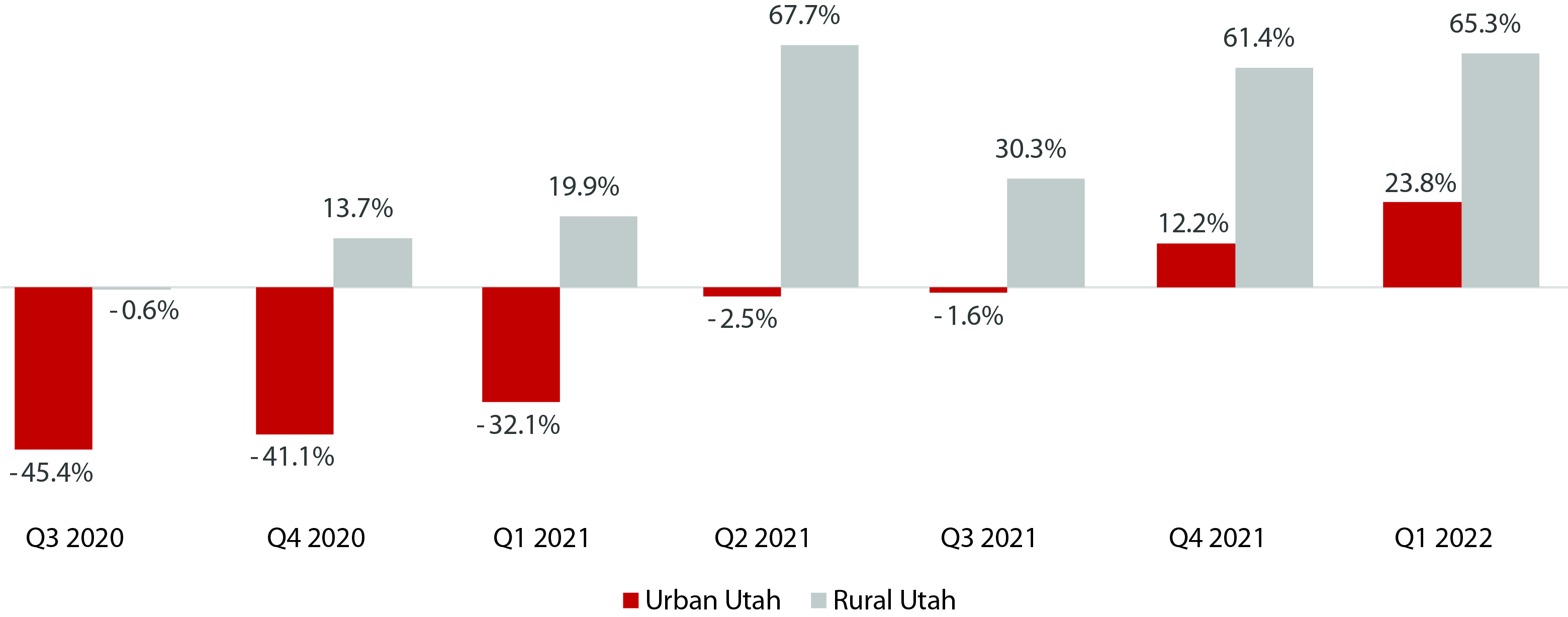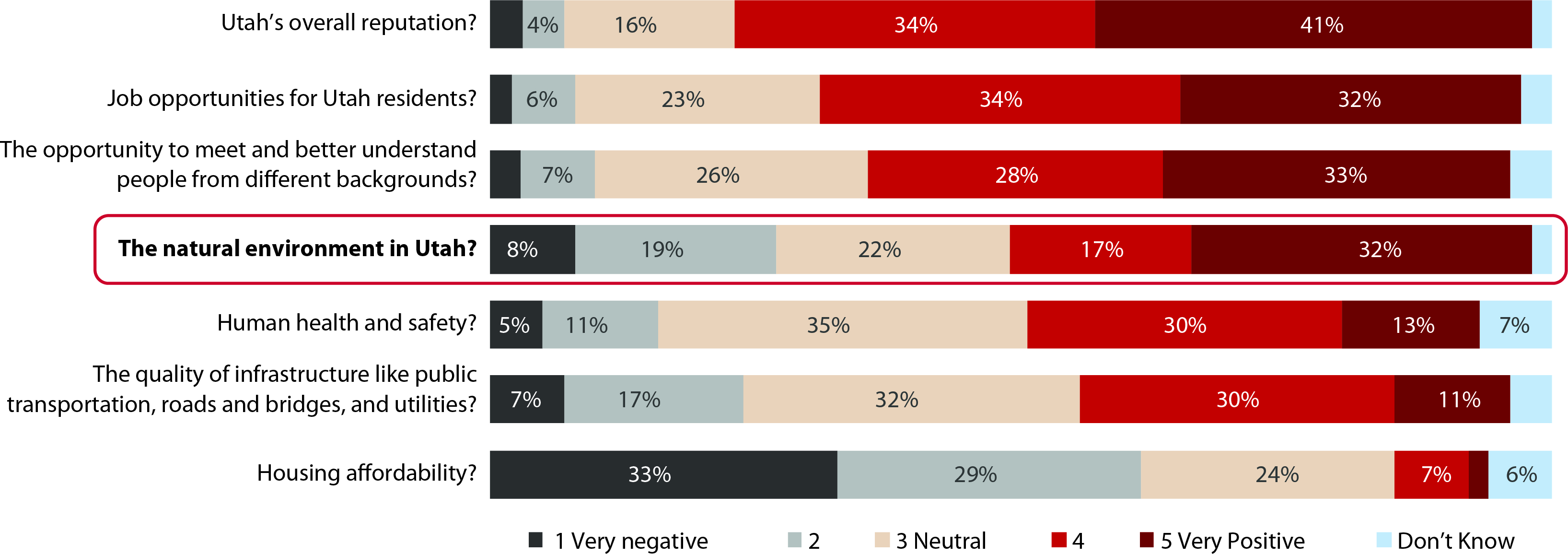Blog Post
Insight: Strong Tourism Recovery Prompts Sustainable Travel Advocacy
By: Jennifer Leaver
Jul 14, 2022 – The homepage of the Utah Office of Tourism’s website (travel.utah.gov) introduces visitors to its Red Emerald Strategic Plan. This unique-to-Utah gemstone—the red emerald—symbolizes the quality of a Utah visitor experience: rare, distinct, and highly coveted. But how does a state tourism office and its regional partners balance a quality visitor experience with increasing visitation? One strategy is to advocate for sustainable travel through visitor education.
Utah’s visitor economy has experienced a strong recovery since the pandemic’s disruptive debut more than two years ago. Based on transient room tax revenue from accommodation sales, tourism in Utah’s rural regions had surpassed 2019 baseline levels by the end of 2020, while Utah’s urban counties regained footing a year later. By early 2022, rural accommodation tax revenue was up 65.3% and urban revenue was up 23.8% from 2019 baseline transient room tax revenue (see Figure1).
Figure 1. Percent Change in County Transient Room Tax Revenue Compared with 2019 Baseline

Note: Urban Utah includes Davis, Salt Lake, Utah, and Weber counties; Rural Utah includes all other 25 counties. Percent changes are based off corresponding quarters from 2019 (e.g., Q3 2020 levels are compared against Q3 2019 levels).
Source: Kem C. Gardner Policy Institute analysis of Utah State Tax Commission data
While increased visitation can be a boon to local economies, it can also lead to negative environmental impacts. In 2021, the Utah Office of Tourism conducted statewide resident sentiment surveys that included a few sustainability-related questions. Interestingly, 27% of statewide respondents perceived tourism as having “negative” or “very negative” effects on the natural environment. In fact, tourism’s negative effects on the natural environment were the second most negatively-viewed tourism-related issue after housing affordability (see Figure 2).
Figure 2. Opinion on the Effect of Tourism

Source: Kem C. Gardner Policy Institute
According to a recent international travel study conducted by Expedia, 90% of the 11,000 respondents from 11 global markets indicated that they “look for sustainable options when traveling.” In fact, two in five respondents said that when they feel a destination or travel option is not committed to sustainable practices, they avoid using them.[i]
Because negative environmental impacts such as vandalized canyon walls, looming toxic smog, and littered river banks can detract from a “Red Emerald” visitor experience, the Utah Tourism Office and its regional partners have committed to advocating for sustainable travel by educating visitors about “leave no trace” practices and environmentally-conscious actions. In early 2020, Moab launched Utah’s first sustainable tourism campaign, “Do It Like a Moab Local.” The campaign, which shares tips for reducing negative environmental impacts, won U.S. Travel Association’s National Destiny Award in 2021.[ii] Since then, several regional tourism offices in Utah have followed Moab’s lead by initiating sustainable and/or responsible travel campaigns for their local areas.[iii]
Ultimately, the goal is simple: help visitors learn ways to leave our state better than they found it so we can preserve what makes Utah a rare, distinctive, and highly coveted place for residents and nonresidents alike.
Jennifer Leaver is the senior tourism analyst at the Kem C. Gardner Policy Institute.
Note: The opinions expressed are those of the author alone and do not reflect an institutional position of the Gardner Institute. We hope the opinions shared contribute to the marketplace of ideas and help people as they formulate their own INFORMED DECISIONS™.
[i] https://advertising.expedia.com/blog/sustainability/sustainable-travel-conscious-traveler/
[ii] https://www.utahbusiness.com/moab-sustainability-project-awarded/
[iii] Examples include Kane County’s “Be Kind to Kanab”, Emery County’s “Remember to Keep it Swell,” and Summit County’s “On the Right Trail” campaigns.






